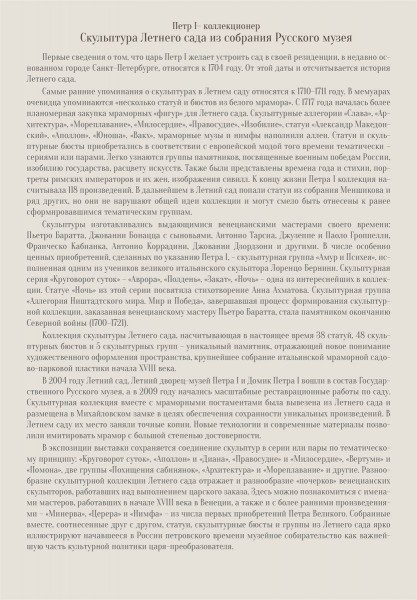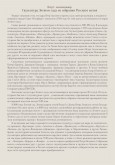Sculptures in the Summer Garden from the Russian Museum Collection (rus.)
-
Location in museum
The St Michael’s Castle,
Зал 136. Скульптура Летнего сада
 Open the panorama of the hall in the virtual tour
Open the panorama of the hall in the virtual tour
- Share
The first information about Tsar Peter I' intention to arrange a garden in his residence, in the newly founded city of St Petersburg, dates back to 1704. Thus the history of the Summer Garden is counted from this date.
The earliest mention of sculptures in the Summer Garden dates back to 1710–1711. An eyewitness wrote in his memoirs about “several statues and busts of white marble”. A more systematic purchase of marble “figures” for the Summer Garden began in 1717. Sculptural allegories Glory, Architecture, Navigation, Mercy, Justice, Abundance, statues Alexander the Great, Apollo, Youth, Bacchus, marble muses and nymphs filled the alleys. In keeping with the European fashion of that time, statues and sculptural busts were acquired thematically – in series or pairs. Groups of monuments dedicated to Russia's military victories, the abundance of the state, and the flourishing of the arts are easily recognised. The seasons and natural elements, portraits of Roman emperors and their wives, images of sibyls were also presented. By the end of Peter I's life, the collection numbered 118 works. Later the Summer Garden replenished its collection with the statues from the Menshikov collection and a number of others. These acquisitions do not violate the general idea of the collection and can be safely attributed to the previously formed thematic groups.
The sculptures were created by outstanding Venetian masters of their time: Pietro Baratta, Giovanni Bonazza and his sons, Antonio Tarsia, Giuseppe and Paolo Groppelli, Francesco Penso (Cabianca), Antonio Corradini, Giovanni Zorzoni and others. Among the particularly valuable acquisitions made on Peter's orders is the sculptural group Cupid and Psyche, executed by one of the students of the great Italian sculptor Lorenzo Bernini. The sculptural series The Cycle of the Day: Aurora, Midday, Sunset, Night is one of the most interesting in the collection. Anna Akhmatova dedicated a poem to the statue Night from this series. The sculptural group Allegory of the Nystad Peace: Peace and Victory commissioned from the Venetian master Pietro Baratta finished the process of forming the sculpture collection and became a monument celebrating the end of the Northern War (1700–1721).
The Summer Garden sculpture collection currently numbers 38 statues, 48 sculptural busts and 5 sculptural groups. It is a unique monument reflecting a new understanding of the artistic design of space, the largest collection of Italian marble garden and park plastics of the beginning of the 18th century.
In 2004, the Summer Garden, the Summer Palace-Museum of Peter I and the Cabin of Peter I became part of the State Russian Museum, and in 2009, large-scale restoration of the garden began. To ensure the safety of the unique works the sculpture collection, along with marble pedestals, was removed from the Summer Garden and placed in St Michael' Castle. The original statues were replaced in the Summer Garden with their exact replicas. New technologies and modern materials have made it possible to imitate marble with a high level of reliability.
The exhibition preserves a combination of sculptures in a series or pairs according to the thematic principle: The Cycle of the Day, Apollo and Diana, Justice and Mercy, Vertumnus and Pomona, two groups: The Rape of a Sabine woman, Architecture and Navigation and others. The diversity of the sculpture collection of the Summer Garden reflects the diversity of style of Venetian sculptors who worked on the execution of the royal order. Here one can get acquainted with the names of masters who worked in Venice at the beginning of the 18th century, as well as with earlier works among the first acquisitions of Peter the Great: Minerva, Ceres and Nymph. Brought together and correlated with each other, the statues, sculptural busts and groups from the Summer Garden vividly illustrate museum collecting started in Russia in the days of Peter the Great as an important part of cultural policy of the reformer-tsar.

